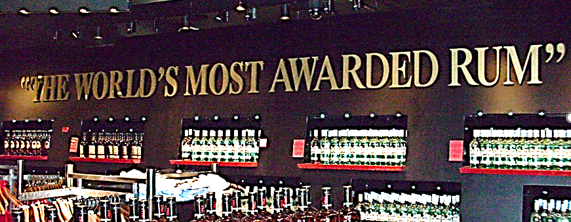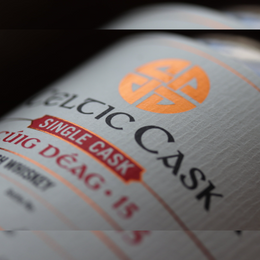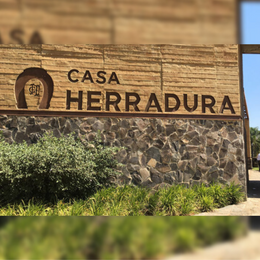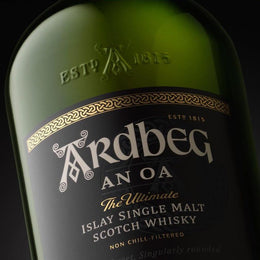 |
Wine and spirits judge, historian and bestselling author. Apart from dealing with sobering world affairs, Joe has been an entertaining educator of wines and spirits and judges at major spirits competitions. He has tasted a range that we could only dream of – from centuries-old ports, Cognacs to many of the world’s oldest whiskies. He also writes on Forbes, The Epoch Times and comments on international politics. Follow Joe on Forbes or his website. |

Bacardi has been a dominant player in the rum industry for better than a century. Its founder, Don Facundo Bacardí Massó, was responsible for the development of clear light rums, a type better known today as Cuban style rums. The company distillery in Cataño, in the suburbs of San Jose, Puerto Rico, is the largest rum distillery in the world. For much of its history Bacardi was also the world's largest producer of rum. Today, Bacardi is the largest privately owned spirits company in the world, with more than 200 well known liquor brands in its product portfolio.
The story of Bacardi begins in 1830, in the thriving Catalan community of the Cuban city of Santiago de Cuba. Early in the 19th century the four Bacardí brothers, sons of a stonemason from Sitges, a small town southwest of Barcelona, immigrated to Cuba. The Bacardí brothers prospered in Santiago de Cuba before a combination of a devastating earthquake in 1852, followed by a cholera epidemic, decimated the town and their businesses. After returning briefly to Sitges, Facundo Bacardí returned to Santiago de Cuba looking for new opportunities.

His return proved fortuitous. Starting around the mid-19th century, Cuba began to emerge as a leading producer of sugar in the Caribbean. Political unrest in Haiti, previously the largest sugar producer, combined with the elimination of slavery in the French and British Caribbean colonies paved the way for Cuba, where slavery was still legal, to emerge as a major sugar producer. Concurrently, the Spanish government announced a competition to produce a light rum to "satisfy the taste of the court and the elite of the Spanish empire."
Christopher Columbus had introduced sugar cane into the Caribbean in 1494, during his second voyage to the New World. By 1501, sugar mills in Hispaniola and Cuba were producing sugar. Spain, however, was more interested in exploiting the mineral riches of Mexico and Peru than it was in agricultural development. The Caribbean sugar boom from the mid-17th century through the early 19th century, made the West Indies the most valuable real estate in the world; however, it largely bypassed the Spanish colonies in the New World.
The term aguardiente is a generic term applied to an alcoholic beverage distilled from any fermented must. Arnaud de Villanova, a 13th century physician and alchemist at the University of Montpelier in France's Languedoc, was the first to describe distilled spirit as agua ardens, literally strong water or flaming water. That is the origin of the term aguardiente and its anglicized expression "firewater." Villanova may also have been the first person to add distilled spirit to wine to extend its shelf life.
During the 16th century, Spanish and Portuguese winemakers produced aguardiente both for local consumption and to add to wine that was being shipped by sea over long distances. The bacterium that converts alcohol into vinegar, Acetobacter aceti, cannot tolerate alcoholic solutions above 20 percent. In the hot humid holds of ships, wine would quickly turn to vinegar without the added protection. This was the origin of fortified wines like sherry, port and Madeira.
In places where sugar cane was cultivated, like the Canary Islands or Madeira, aguardiente de caña was typically made from sugar cane juice, as this was a less expensive material than using wine. That practice spread to the Spanish and Portuguese colonies in the New World and has continued to this day. In the French West Indies, fermented sugar cane juice was used to make Rhum Agricole as opposed to Rhum Industriel, which was made from molasses.
Molasses is a byproduct of sugar refining. Initially, it was simply discarded as a waste product. It's not clear when molasses first began to be used as a feedstock to produce rum. The circumstantial evidence suggests that a Dutch immigrant named Pietr Blower, who arrived, via Brazil, to Barbados in 1637, was the first to use molasses to produce rum. The practice of using molasses first took hold in Barbados in the early 17th century and, from there, spread throughout the West Indies.
An early form of rum was called Tafia. Like aguardiente it was harsh, often had off putting aromas and taste, and was sold unaged. In the mid-17th century, it was described as, "a hot vile liquor ... called kill devil." Little is known about the early history of rum, and specifically when the practice of aging rum in wooden oak barrels began.
By the late 18th century, however, rum had evolved from a fiery "rotgut" spirit to a high-quality beverage. At his inauguration in 1789, for example, George Washington insisted that only the finest, Barbados rum should be served to his guests, even though the importation of that rum violated the Continental Congress's embargo on the importation of British goods.
Another reason why rum distillation was slow to develop in Spain's Caribbean colonies was Madrid's prohibitions on the production or export of distilled beverages. To protect Spain's wine and brandy industry, Spanish Emperor Charles II banned the production of rum in Spain's overseas colonies in a Royal Edict dated June 8, 1693. It was revoked in 1788, but restrictions limiting the amount of rum that could be imported into Spain remained. England, on the other hand, encouraged the production of rum, seeing it as a homegrown alternative to importing expensive brandy from France and Spain.

By the mid-19th century, small-scale distillation of aguardiente was widespread throughout Spain's Caribbean colonies. Most of what was produced, however, was from small, unlicensed distillers. These bootleggers produced a harsh spirit, usually from sugar cane juice, that was barely drinkable, and then only when mixed with other beverages like juices or coffee. Cuban sugar cane has particularly high levels of sucrose, resulting in a hot, rapid fermentation that often produced many off flavors in the resulting distillate.
This was the environment in which Facundo Bacardí began his quest to develop a high-quality light rum. It took Bacardí almost 10 years to develop his signature rum, from roughly 1852 to 1862. Bacardi's new rum style was the result of four important innovations. First, Bacardí isolated a strain of yeast from the roots of sugar cane plants growing in Cuba. Little is known about his efforts in identifying this specific strain of yeast - whether it was a chance discovery or the result of a systematic search for a particular yeast that yielded the aroma and taste profile he was looking for.
This specific yeast is now called Levadura Bacardi (the Bacardi yeast). It is one of the factors responsible for the distinctive aroma and taste profile of the company's rums. Stocks of the "Bacardi yeast" are kept under close security at the company's distilleries in Puerto Rico and Mexico, the only two distilleries where rum is currently produced. Yeast tends to mutate over time, a phenomenon that geneticists call genetic drift. The company employs a range of sophisticated techniques, including gas chromatography and genetic testing, to ensure that each batch of yeast used is identical to the original "master strain" first isolated by Facundo Bacardí.
The company considers its proprietary yeast strain so valuable that when the Cuban government seized Bacardi's distillery on October 14, 1960, it discovered that the company had killed the yeast stock at its plant to ensure that it did not fall into the hands of Castro's government. Fortunately, for rum drinkers, samples of Levadura Bacardi were already available at the company's Puerto Rican and Mexican distilleries. It's believed that an additional sample of its proprietary yeast is also kept for safekeeping at the company's international headquarters in Bermuda.
A second innovation was the use of charcoal filtration. The charcoal was made from a combination of tropical woods and coconut shell. Charcoal is a form of carbon that is produced by the heating of wood or other organic substances in the absence of oxygen. When the oxidation of carbon is carried out by high temperature steam, millions of pores between the carbon atoms are created and the charcoal is considered to be "activated." The porous structure of activated charcoal creates a large surface area where many types of organic contaminants in a liquid or gas can bind to the carbon.
Facundo Bacardí was not the first distiller to use charcoal for filtration. The practice was already widespread in the production of Tennessee whiskey. The charring of oak barrels, although not quite the same as "activated charcoal," produces a similar effect. He was, however, the first distiller to use it in the production of rum. Moreover, the source material of the charcoal also affects its filtration properties by determining the range of pore sizes that are produced.
These typically range from micro-pores of less than four nanometers (nm), (a nanometer is one billionth of a meter), to macro-pores of 500 to 2,000 nm. The greater the proportion of micro-pores, the more effective the absorption of the activated charcoal is. Coconut shell activated carbon typically has 85 to 90 percent of is pores in the micro-pore range, so it is particularly effective at absorbing contaminants.
Charcoal first began to be used as a filtering agent in the de-colorization of sugar at the beginning of the 19th century. British chemists in the mid-1860s first described the use of coconut shells to produce activated carbon. Facundo Bacardí was the first, to explore the properties of coconut shell activated carbon as a filtering agent for distilled spirits.
The specific combination of material used in the production of Bacardi's charcoal is still a closely kept secret. What impact the other tropical woods have on the filtration process is unclear. The charcoal not only absorbed contaminants that gave the rum a harsh taste, it also decolorized it, giving it a clear appearance.
A third innovation was the use of two different distillates, or "marks," that were subsequently blended to produce Bacardi's signature rum. Historically, rum was produced from a pot still in a two-step process that would first produce a "low wine" of typically 25% to 30% alcohol by volume (ABV), and then a second distillation that would capture the "heart cut" of spirit that would be ultimately aged and matured. This is the method used to produce many of the world's better-known spirits, including Jamaican rums, Scotch whisky and Cognac.

Bacardí's approach was to distill two different types of distillate, each with a different alcoholic strength and level of congeners (the organic molecules that give spirits their aroma and taste profile). The first distillate was called aguardiente. It had an alcoholic strength of around 65 to 70 percent. The second mark, a much more rectified spirit, calledredistillado, had fewer taste and aroma elements and an alcoholic strength of 85 to 95 percent. At the time this was a very unusual approach to the production of rum, although it is much more common today. It was very similar, however, to the process used in the production of Spanish brandy. The two distillates were then blended together to create a consistent aroma and flavor profile.
The final innovation was the practice of aging the spirit in oak barrels. The use of oak for the aging of distillates wasn't particularly new. It was already a common practice in the aging of rums in Jamaica and Barbados, as well as the aging of Cognac and whisky. He was the first, however, to use to it to age the distillate being produced in Cuba.
The four innovations, proprietary yeast, charcoal filtration, blending different strength distillates and oak cask aging, gave Bacardí's rum a distinctive appearance, aroma and taste profile. This style of rum came to be called Cuban light rum and has become, by volume, the leading style of rum sold worldwide. Over the last century, the company has further refined the process and vastly expanded the scale of its production, but fundamentally still makes rum the way Facundo Bacardí did in the 19th century.
It's unclear why the Spanish government specified the creation of a light rum. It may be that it wanted a product that would be different from the English style rums being produced in Great Britain's Caribbean colonies. It may also have wanted a spirit that would be very different from Spanish brandy. It's unlikely that it had anticipated the emergence of cocktail culture in Europe and America. The emergence of Cuban light rums, however, caught the rise of the cocktail culture perfectly.
The Cuba Libre and the Daiquiri were both created using Bacardi rum, the former by American soldiers in 1900, toasting a free Cuba by adding rum to their Coca Cola, and the latter by an American mining engineer in 1898. The company even trademarked the "Bacardi Cuba Libre" and the "Bacardi Daiquiri" to ensure that they could not be legally made without using Bacardi rum. The light, "mixable rums" were ideal for cocktails. Bacardi's rums haven't looked back since.
Facundo Bacardí bought his first distillery in 1862, and began producing rum in Santiago de Cuba. The company steadily grew, building a worldwide distribution network and a powerful global brand, notwithstanding two world wars, prohibition in the United States and elsewhere, and the expropriation of its operation in Cuba by the Castro government.

For most of the last three-quarters of a century it has been the world's largest producer of rum and far and away its best-known rum brand. Over its roughly 150-year history, Bacardi has garnered more than 550 awards, more than any other rum brand, for the quality and innovative marketing of its rums. The company estimates that approximately six million Bacardi Cuba Libras are consumed every day.
Today Bacardi operates in 160 countries and has 30 production facilities. Until 1993, Bacardi's business was limited to producing and distributing rums. Starting that year, the company began to add to its spirit portfolio, beginning with the acquisition of the Martini and Rossi group. All its rum production is at its distilleries in Cataño, Puerto Rico (80%) and in Tultitlán just outside of Mexico City (20%).
In 2012, the company sold 19.8 million cases of rum worldwide. Its sales dropped to 19.1 in 2013, and 18.2 million in 2014. McDowell's, a division of Diageo's Indian subsidiary, United Spirits Ltd., sold 18.3 million cases of rum, mostly in India, in 2014 claiming the mantle of world's best-selling rum. In 2015, McDowell's sales dropped to 17.8 million cases, but that still put it ahead of Bacardi's 17.4 million cases allowing it to retain the title of world's best-selling rum brand.
Bacardi rum's U.S. market share peaked at 39.7 percent in 2005, and has dropped steadily since. In 2014, it was 34.3 percent, followed by Diageo's Captain Morgan at 23.2 percent. It fell to about 33 percent in 2015, while Captain Morgan fell to about 21 percent. Although the overall rum market is showing growth, white rums have seen declining volumes, while brown rums and premium brands have shown strength.
No story about Bacardi would be complete without a reference to the company's famous bat logo. Company legend has it that Amalia Bacardí, Facundo's wife, suggested the bat logo. The company's first distillery featured a colony of fruit bats in its attic. Fruit bats were beneficial in sugar cane fields aiding in pollination and in controlling harmful insects. Moreover, in both Cuba and Catalonia, folklore held that bats represented brotherhood, discretion, faithfulness, persistence and determination. The bat logo itself has undergone various redesigns over the years, but it has remained the company's distinctive and unmistakable trademark.
Bacardi's core rum range consists of 14 different flavored rums and six traditional rums. Three rums from the core range are reviewed below as well as the Casa Bacardi Special Reserve, which is only available at the Puerto Rican Distillery's visitor center.


Bacardi 1783 Solera, no age statement, 40% ABV, 750 ml
The Bacardi 1783 Solera, as the name suggests, is produced by a solera method, a system of fractional blending that progressively mixes newer and older rums over a three-year period. The rum has a light amber color. On the nose, it is dry, with aromas of tropical fruits, including banana and mango, as well as stone fruit and candied citrus, followed by vanilla and cinnamon spice and hints of caramel and toasted coconut. On the palate, the rum is smooth with a silky character, with pronounced tropical and stone fruit flavors and wood spice. The finish is medium length, dry with lingering fruit and vanilla notes.
Rating: Appearance: 7/10, Nose: 26/30, Palate: 26/30, Finish 25/30 Final Score: 84/100

Bacardi 8, 8 YO, 40% ABV, 750 ml
The Bacardi 8 is actually a blend of eight to ten-year old rums with a medium amber color. On the nose, there are distinctive brown sugar and caramel aromas, followed by dried fruit aromas of raisin, figs, prunes and dates, as well as some notes of black cherry and candied maraschino cherry. In the background, there is a noticeable vanilla note, as well as marzipan and sweet wood spices. On the palate, the rum is smooth and rich, almost luscious, with distinct dried fruit cake notes and hints of bittersweet chocolate. The oak flavors are noticeable, but well integrated. The finish is long, smooth with distinct dried fruit notes and a lingering vanilla note.
Rating: Appearance 8/10, Nose 27/30, Palate 26/30, Finish 28/30 Final Score: 89/100

Bacardi Reserva Limitada, no age statement, 40% ABV, 750 ml
The Bacardi Reserva Limitada was released in 2003 as a visitor center exclusive bottling. It became part of the core range in 2007. The rum has a dark amber color. The expression consists of a blend of rums aged 10 to 16 years of age. On the nose, there is a distinct crème brûlée aroma surrounded by notes of vanilla, caramel and butterscotch. The rum exhibits pronounced cinnamon, clove and wood spice notes accompanied by floral elements, candied citrus and toasted almond. On the palate, there is a distinct creamy custard-like texture, with sweet notes accompanied by candied fruit, almond butter, dried fruits and vanilla. The finish is long, creamy with a soft mellow character featuring vanilla custard notes, caramel and fruitcake elements.
Rating: Appearance 9/10, Nose 28/30, Palate 28/30, Finish 29/30 Final Score: 94/100

Casa Bacardi Special Reserve, no age statement, 43% ABV, 750 ml
The Casa Bacardi Special Reserve is only available at Bacardi's Puerto Rican visitor center. The expression consists of a blend of rums from 8 to 12 years of age. The rums are selected by Bacardi's master blender, Joe Gomez and, once blended, undergoes an additional "finishing" in an Oloroso sherry cask for one month. The sweet spot for aging aguardienteis four to 12 years, while the lighter redistillado needs 16 to 20 years of aging to reach its sweet spot. Bacardi anticipated that they would sell an average of four bottles of the Special Reserve per day. The actual number has been running closer to 20. The bottling will be available only as long as the supply lasts. Each bottle is numbered and hand filled by the customer from a cask at the time of purchase. The color is a deep rich mahogany.
On the nose the rum appears sweeter than the Bacardi 8. There are distinctive sherry notes of dried fruit, raisin, walnuts and almonds that are reminiscent of a Spanish Brandy de Jerez. There are notes of candied orange peel with hints of anise, licorice and a bit of pepper. On the palate, there is a distinctive sweet, smooth velvety texture, with a pronounced viscous mouth feel. There are the distinctive fruitcake elements followed by caramel, vanilla and candied orange, and hints of walnuts and almonds. The finish is long, complex with a range of dried fruit flavors, with caramel and vanilla notes.
Rating: Appearance 10/10, Nose 28/30, Palate 29/30, Finish 29/30 Final Score: 96/100
The history of Bacardi is inseparable from the history of rum. The company's production innovations, its commitment to quality and its superlative offerings set a standard that other rum distillers strive to emulate but only a few have ever reached, much less surpassed.
Bottoms up!
By Joseph V. Micallef
Joseph V. Micallef is a judge and commentator on food, wines, spirits and travel. He is also a historian, best-selling author, keynote speaker and syndicated columnist As a journalist and former war correspondent he has written on an eclectic mix of topics from wines, spirits and travel, to military history and world affairs. For 30+ years he was the CEO and Senior Producer of a media company.
Joe has also been a judge for a variety of international wines and spirits competitions, including the International Wines and Spirits Competition, World Drinks Awards, World Whisky Awards, San Francisco International Wine Competition, American Distilling Institute Craft Spirits Awards, and the Irish Whiskey Awards. Along with judging, he spends his spare time making wine in Oregon.
He holds the Diploma in Wines and Spirits from the Wine and Spirits Education Trust (London). He is also a member of the Advisory Board of the Council of Whiskey Masters. The Advisory Board’s two dozen members are widely considered the leading experts on whisky in the world.
He has spoken at a variety of professional venues, including the Institute of Strategic Studies (London), the NATO Defense College (Rome), the World Future Society and a large number of universities, military and other organizations on a variety of topics dealing with military and current affairs. He has also appeared as a commentator on a variety of cable news networks.
His recent books include, Scotch Whisky: It’s History, Production and Appreciation, Understanding World War I: A Concise History (part of a 12 episode made for television documentary), and Islamic State: Its History, Ideology and Challenge. Additional books on Tequila and on Italian Wines are forthcoming.
He has written, directed, and produced dozens of documentaries on military history and current affairs.
Joe is also an opinion columnist for The Epoch Times where he writes about national security and international affairs, and a contributor to Forbes where he writes about wines, spirits and travel to the dusty corners of the world. In addition to writing, he is also the International Editor for the Irish Whiskey Magazine.
He has spent more than 20 years judging wines and spirits and lecturing and writing about them, and looks forward to many more. Grab a drink with him at the bar if you have the chance – suffice to say, he's not your average Joe.







